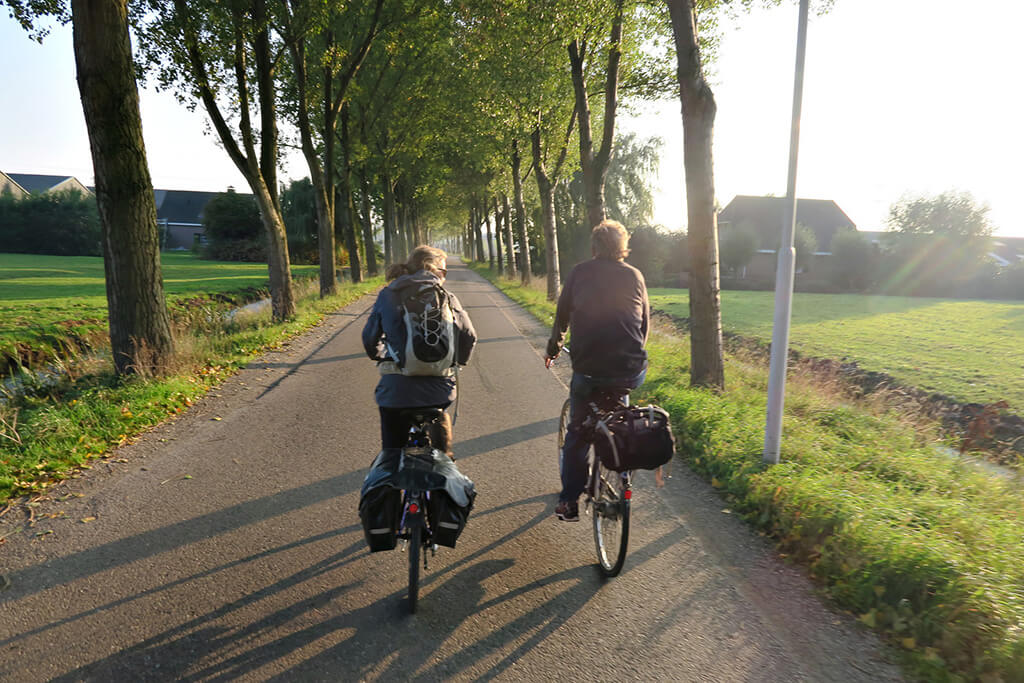Autumn Gear Guide
Find inspiration in our Gear Guide that will keep you out on your bike through wind or rain.
Download NowThe planned bike highway will enable safe and practical long-distance and rural bike commuting.

Photo by Alan Grinberg
Protected bike lanes and intersections in cities are wonderful. They keep people on bikes separated from motorists and when designed correctly, create networks of safe cycle paths for all ages and abilities. But what about when you leave the city? For many, the rise of transportation cycling ends at the outer city limits. But life, of course, does not.
Recognizing that a true global shift away from car-reliance to everyday cycling will require sustainable transportation agendas to be inclusive of rural and long-distance commuters, Germany has just approved a 60 + mile (over 100 km) bicycle Autobahn than, when completed, will connect 10 western German cities and four universities. The route will run largely along decommissioned railroad tracks in the struggling Ruhr industrial region, connecting cities including Duisburg, Bochum and Hamm.
According to Agence France-Presse, 2 million people live within 2 kilometres of the planned route, and regional development group RVR predicts the route will take 50,000 cars off the streets every day.
The bike highway will be a significant upgrade from Germany’s current rural bike routes, which are single lane and often have below-ground tree routes creating irregular – and unwanted – speed bumps along the path. The new bike routes will be around 13 feet (four metres) wide, have overtaking lanes, intersect most roads via overpasses and underpasses, be well lit for night riders, and be cleared of snow in the winter.
While Germany has recently opened the first three miles (five km) of the planned bike route, the vision is far from being realized. As is often the case with bike projects, financing for the project isn’t secured. While the federal government typically pays for motor, rail and waterway infrastructure in Germany, cycling infrastructure is left to local authorities. The initial three kilometre section was funded by the European Union, North Rhine-Westphalia state, and the RVR, but authorities are left struggling to raise the additional 180 million euros (approx. $196 million USD) it will take to complete the 60 mile route.
The state government, run by centre-left Social Democrats and the Greens party, is planning legislation to take the burden off municipalities and the conservative CDU party in Berlin has suggested private financing by advertising along the route. Whichever method (or combination of methods) the region ends up employing, the nation’s support for is high and similar projects are already underway elsewhere. Frankfurt is planning a 20-mile path south to the city of Darmstadt, Munich is planning a 9-il route to its suburbs, and Berlin is conducting a feasibility study on connecting the downtown core with the suburb of Zehlendorf.
As the evidence from cities proves, safe cycling infrastructure has an “if you build it, they will come” effect on rates of cycling in its area. When you expand that area to allow for inter-urban and long-distance travel, you expand the possibilities of what a populace can do by bike. Hats off to Germany for taking a serious step in the right direction.
Hilary Angus is the Online Editor at Momentum Mag. @HilaryAngus
Find inspiration in our Gear Guide that will keep you out on your bike through wind or rain.
Download Now
I love it so much, and I wish Nigeria government takes our cycling to this level
Comments are closed.